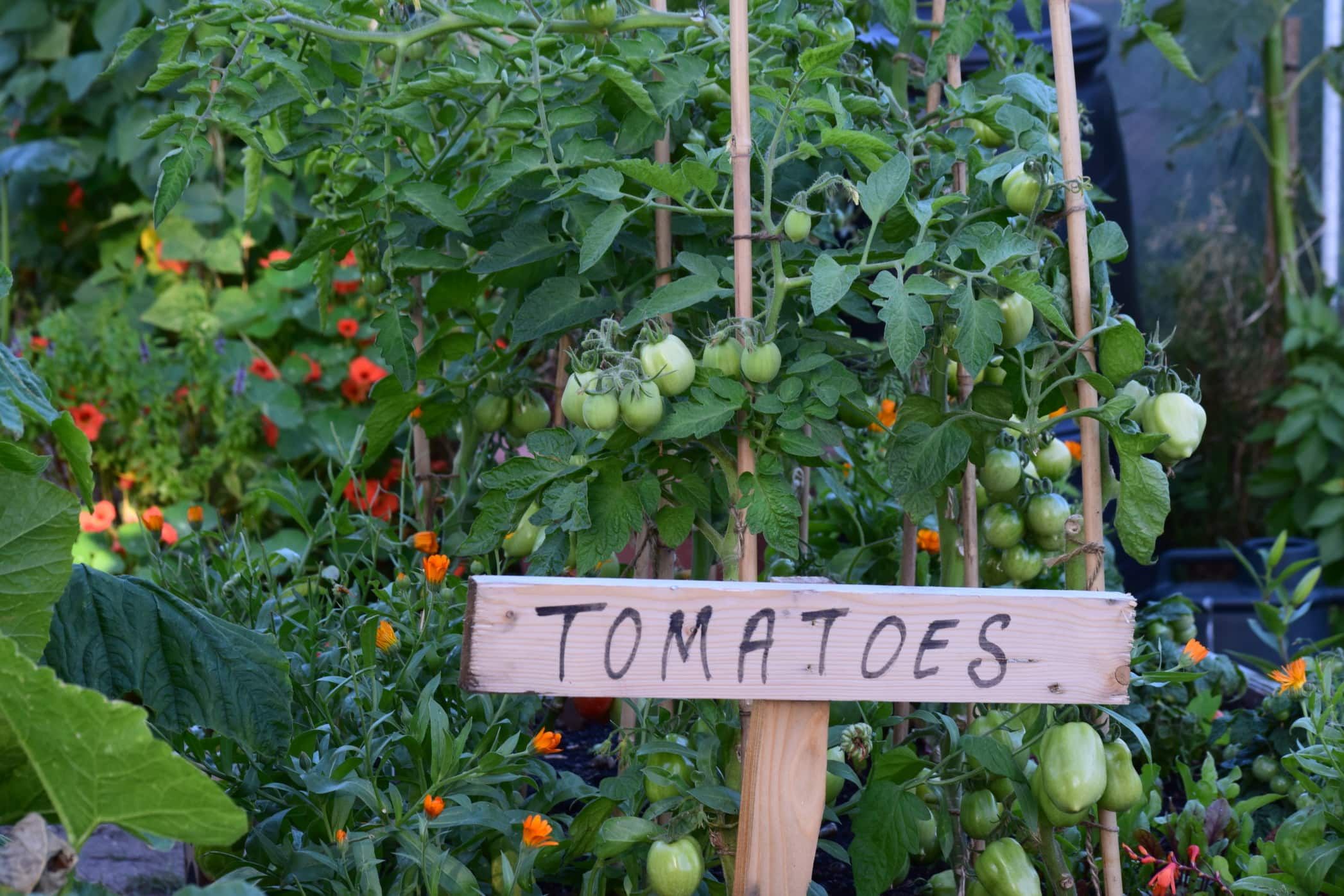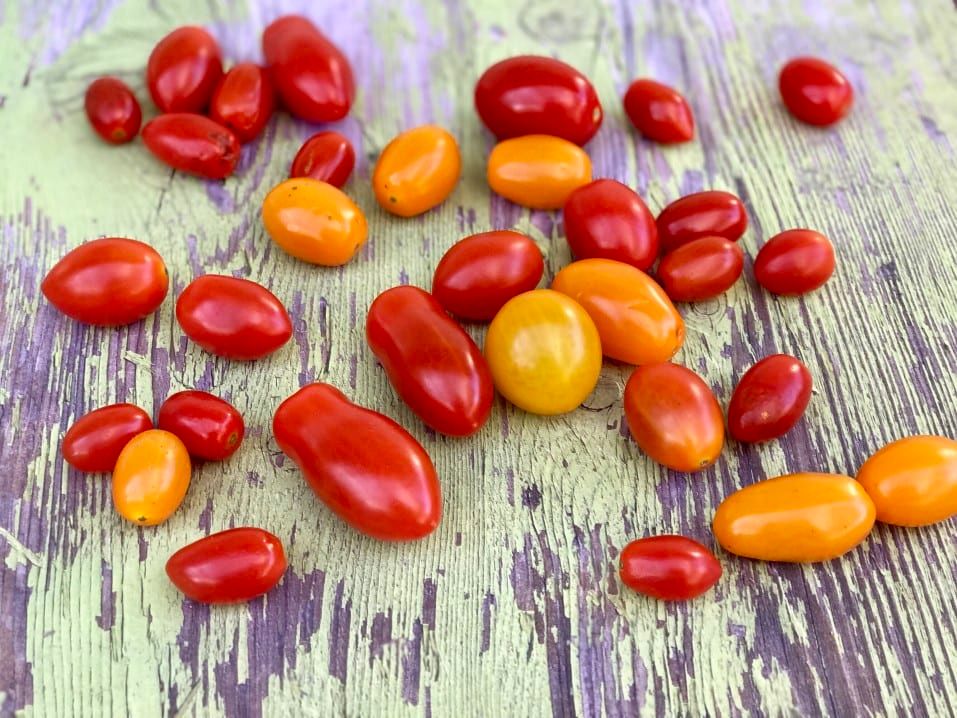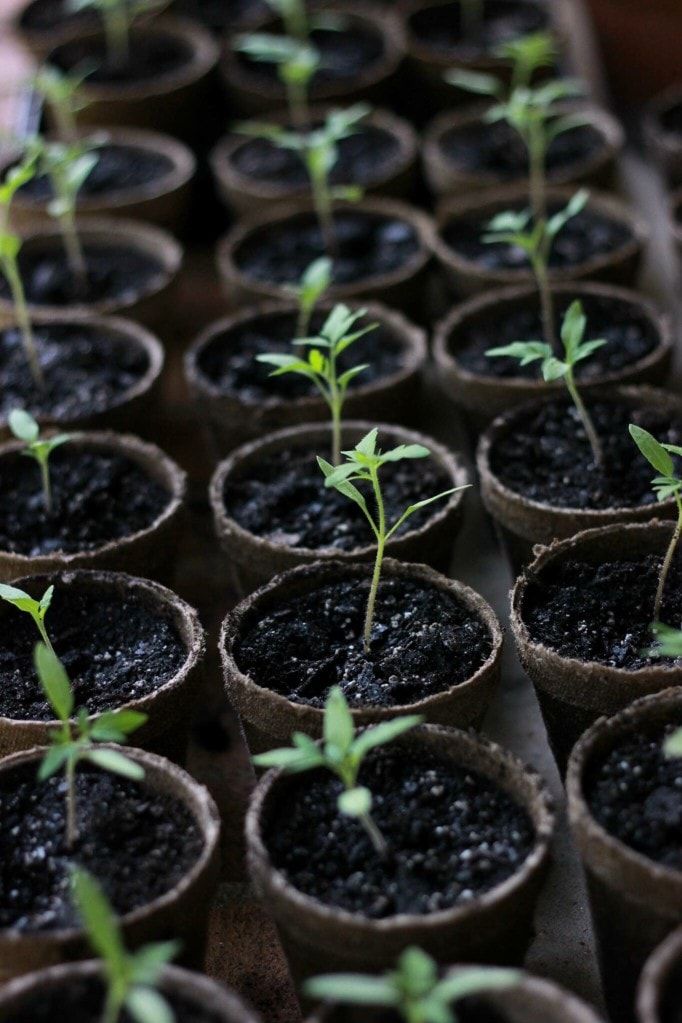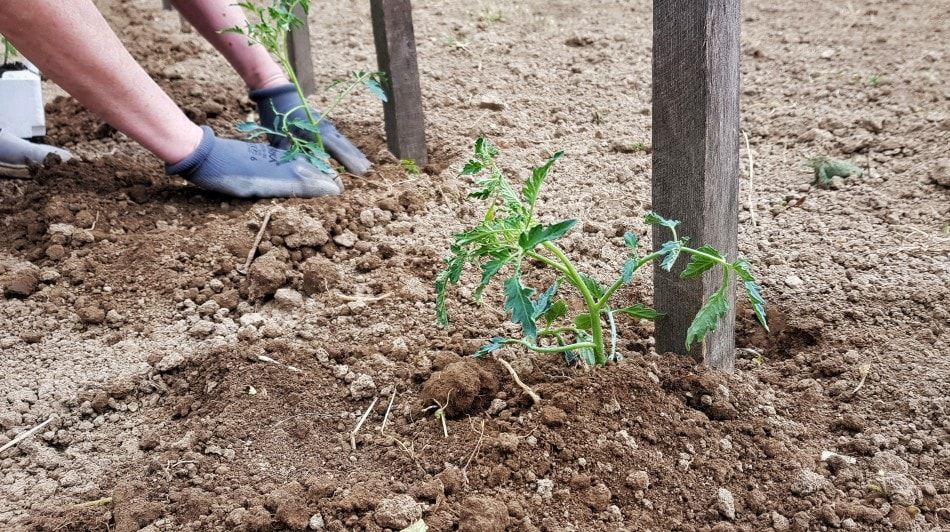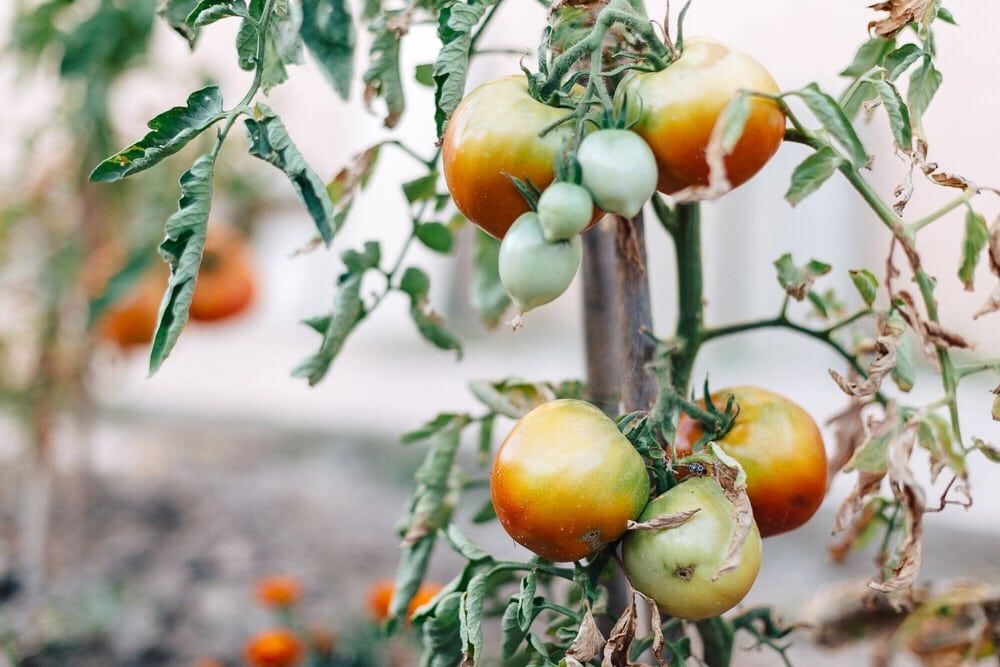Question: Are tomatoes a fruit or a vegetable?
The age-old question that has stoked as much fiery rhetoric as the chicken-or-egg debate.
My answer: Does it matter? I just call them delicious. And honestly, there's a much more important question: How do you grow tomatoes?
With helpful tomato growing tips, an everything-you-need-to-know guide to tomatoes, and a guide for how to grow tomatoes at home, this tutorial will teach you how to flawlessly grow this easy summer fruit. I mean vegetable. I mean PLANT.
Grow Tomatoes in Pots
Unfortunately, it’s not just humans who know tomatoes are tasty. Pests have been let in on that secret too. Nothing is more disheartening than walking out to your garden and seeing a maimed tomato plant, branchless and fruitless, that a hoodlum deer had munched upon.
To prevent this problem, or just because it's more convenient, you can grow tomatoes in pots. Tomatoes, specifically determinate tomatoes (more on that later), make great patio plants.
Simply pick out a pot that has drainage holes on the bottom. Use loose, well-draining soil. The soil in pots dries out faster than soil in gardens, so make sure you water it every day to keep it consistently moist. Also, keep the pot in a sunny spot where it will get at least 6 hours of direct sunlight each day. But, of course, not in a spot where it will fall prey to a diabolical deer.
Sweet revenge.
Or Grow Tomatoes from Slices
Not only can you grow tomatoes from seeds, you can also grow them from slices.
How?
First, choose a large tomato and cut a slice that is 0.5 inches thick.
Take a small container and fill it with potting mix. Then place the tomato onto the potting mix. Cover it with soil, gently patting down a layer on top of the tomato slice. Cover the container with plastic wrap to preserve the warmth and moisture within. In as little as a week, your tomato will begin to sprout! Uncover the seedling and place it in a new soil-filled pot, in a sunny spot. Eventually, transfer it into a bigger pot or even your garden. Fertilize the seedling every couple weeks and water it about 1 inch every week.
Your slice will be sprouting new tomatoes in no time.
Types of Tomato Plants
According to the US Department of Agriculture, there are 25,000 types of tomatoes. Although considering all 25,000 types of tomatoes sounds fun, narrow down what kind of tomato you want to grow by referring to the 4 classifications below.
Determinate Tomatoes vs. Indeterminate Tomatoes
Determinate
Determinate tomato plants grow to regular heights, making them easy to manage and ideal for growing in containers or pots. Determinate plants produce all of their fruit at the same time, so if you grow a determinate, make sure you are ready to unbuckle your pants and eat all of the tomatoes, or more reasonably, store them, when the time comes.
Indeterminate
If determinate tomato plants are the straight-edged member of the tomato plant family, these are their wild child, black sheep sister. Indeterminate tomato plants do not have a regular height or growth schedule. Throughout a growing season, these plants will continue to do just that: grow. They will also continue to produce fruit at different times throughout. They can grow to be 8-10 feet tall before frost or disease kills them off.
Hybrid vs. Heirloom Tomatoes
Hybrid
Hybrid tomato plants are created through the cross-pollination of two different tomato plants. This cross-pollination results in a tomato that has the best traits of both of its parents. This can result in bigger sizes, tastier tomatoes, or more disease resistance in the plants. Because of this, hybrids generally require less care than heirloom plants. They make the perfect, calculated fruits you know from grocery store bins.
Heirloom
If hybrids are the shiny new-kids-on-the-block, heirlooms are grandfathers yelling at those kids to get off their lawn. Heirloom tomatoes have seeds that are over 50 years old. These plants are open-pollinated, which means their pollination has no human-intervention. They have more flavor than hybrids but tend to produce a “mystery box” harvest; you never know what you are going to get and when you are going to get it.
Tomato Plant Fertilizers
The tomato plant fertilizer you should use greatly depends on your soil pH. Test your soil.
If your soil has a high nitrogen content, use a fertilizer high in phosphorous and low in nitrogen like 5-10-10 mixed fertilizer.
If your soil is low in nitrogen, use a balanced fertilizer like 10-10-10.
If you don’t have a way to test your soil, a fertilizer that always works well with tomatoes is mushroom compost. Mushroom compost traps water in the soil, provides calcium which keeps your tomato plants healthy, and protects your tomatoes from bacteria.
How to Grow Tomatoes
Here's what you'll need:
- Tomato seeds
- Soil
- Water
- Epsom Salt
- Fertilizer
- Pots/ Containers
- Stakes (optional)
- Gardening Tools
Step 1: Plan for Your Plant
Choose which kind of tomato you want to plant and how you want to plant it.
Then, decide when you want to plant it.
Tomatoes are a summer plant. Consequently, the seeds will not germinate if the soil has a temperature of less than 60 degrees Fahrenheit. Plan to start growing your seeds a couple of weeks after the last frost. Make absolutely sure there is no chance of another frost coming. If a freeze happens while your tomato plants are outside, they will die.
Pro Tip: If an unexpected frost occurs while your plants are outside cover them with a sheet beforehand to save them.
Step 2: Plant the Seeds
You should start your seeds indoors. Fill small pots with seed starter mix. Moisten the soil and then dig ¼ inch deep holes. Place the seeds in the holes ½ inch apart from each other. Cover them loosely with soil and leave them on a sunny windowsill.
Step 3: Your Plant Will Start Growing Indoors
Every day, water until the soil is moist. By the end of week 1, some sprouts should begin to appear. By the end of week 4, true leaves will begin to grow above the baby leaves. At this point, thin out any plants that are within a half-inch of each other.
Step 4: Prepare Your Plants
Plants are sensitive!
Before moving your tomato plants into the garden expose them to the outdoors, leaving them out for a couple of hours on the first day, an hour more on the second day, and so on for a week. This way direct sunlight won’t shock the plant when they are moved to the garden full-time. You want to treat them with the same level of sensitivity that newly divorced parents treat their children. Do anything to make them happy. Be overly cautious.
Choose a spot to plant them with direct sunlight. If you are using tomato stakes to guide your plants, place them in the soil before planting so that they do not damage your plant’s roots. The stakes should be sturdy and tall and inserted in the ground at a depth of at least 1 foot. They should be 4 inches away from where you plan to put the plant.
Step 5: Plant Your Tomatoes in the Garden
Time to move your plants to the garden! Make holes at least 3 feet away from each other that are twice the size of the root ball. Put a pinch of Epsom salt in the hole and then place the tomato plants in them. This will give them needed nutrients right off the bat.
The root ball should be inserted into the soil deep enough that its lowest leaves are just above the soil. The soil should cover 1/3 of the stem so the roots can grow healthily.
Welcome your tomato plant to its new home by thoroughly watering it.
Pro Tip: Plant your tomatoes on a cloudy day so they don’t have to be exposed to direct sunlight right away.
Step 5: Care for Your Plant
Depending on what kind of tomato you planted there will be different care instructions. Some need support and pruning while others do not. No matter the type, water your tomato plant every day until the soil is moist, about 2 inches per week. This is especially important in the beginning. Water early in the morning so your plant has moisture to feed on during hot days.
Add small amounts of your chosen fertilizer to the plant when you transplant it, and then again when the tomatoes start growing, every few weeks.
Mulch a month after planting. This will discourage weeds and increase moisture in the soil.
Step 6: Harvest and Enjoy!
You can harvest your tomatoes at any stage in their growth. However, the perfect tomatoes for picking are bright red but slightly yellow around their stems.
Time to eat your tomatoes! Between Caprese sandwiches, pasta sauces, and salads there are so many tomato recipes to choose from.
Unable to eat all the tomatoes that you harvested? You can store them.
Next time you plant tomatoes, consider rotating their planting spot so that the soil has time to regain nutrients, and to lessen the likelihood of diseases infecting the plants.
Conclusion
I hope you enjoyed this tutorial on how to plant tantalizingly tasty tomatoes in your backyard!
For more tips on growing tomatoes check out our article: everything you need to know about growing tomatoes. Let me know what you thought about this guide in the comments below. If you liked it, be sure to share it!

